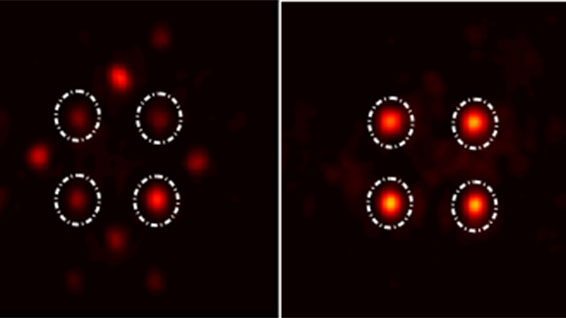14 Jun 2015
A glass lattice that traps light in such a way that it exhibits ‘infinite mass’ has been devised by a group of physicists at Heriot-Watt University.
The work of the group, from the Institute of Photonics and Quantum Sciences (IPaQS) within the School of Engineering and Physical Sciences, has been published in the journal Physical Review Letters. The paper reports the experimental demonstration and theoretical analysis of a glass matrix of waveguides, known as a photonic lattice, which is laser-written into a glass substrate. When a carefully prepared state of light is coupled into the photonic lattice, the light suddenly behaves as if it has ‘infinite mass’. Normally, light wants to diffract, in much the same way as water waves on a pond radiate outwards. This new type of ‘heavy’ light is just too heavy, it just travels on in the same waveguide within the lattice, forever.
This new way of guiding light has many potential applications, ranging from telecommunications, imaging and, excitingly, a new platform to investigate novel materials, including potential ‘wonder’ materials like graphene and high-temperature superconductors.
The experimental work was led by Dr Robert Thomson, an STFC Advanced Fellow and Associate Professor within IPaQS. “Laser-written photonic lattices are a powerful way to observe phenomena that are simply too difficult to observe in other systems. It’s the controllability and cleanness of the system that has allowed us to observe this “heavy light” for the first time”.
The theoretical work was led by Dr Erika Andersson and Professor Patrik Öhberg. “Physics is all about waves. Electrons propagate as waves when moving through materials, and light is a wave that can move through a photonic lattice. In fact, the equations that govern the two situations are essentially the same. It’s this similarity in the physics of the two systems that we hope will open the way for us to create optical “analogues” of the electrical properties of materials. It’s very exciting to think that there is a possibility this may enable us to study theoretical materials that are simply too complex to model using current techniques.”















